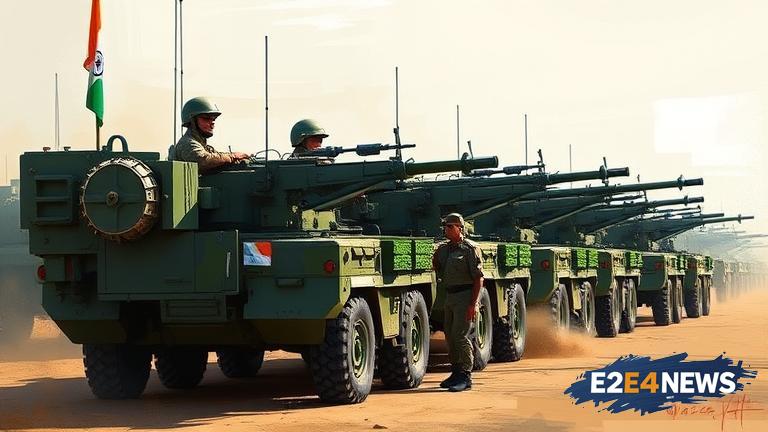The Indian government has recently unveiled a substantial emergency defence package worth $4.5 billion, aimed at bolstering the country’s national security and defence infrastructure. This significant investment is expected to play a crucial role in enhancing India’s military capabilities, particularly in the face of emerging threats and challenges. The package is designed to provide the necessary funds for the procurement of critical defence equipment, technology, and systems, which will enable the Indian armed forces to respond effectively to various security scenarios. The move is seen as a strategic effort to strengthen India’s defence posture and protect its interests in the region. The emergency package is also expected to have a positive impact on the domestic defence industry, with a focus on promoting indigenous manufacturing and innovation. This initiative is in line with the government’s ‘Make in India’ and ‘Atmanirbhar Bharat’ policies, which aim to reduce dependence on foreign defence imports and promote self-reliance in the defence sector. The package will cover a range of defence modernization initiatives, including the procurement of new fighter jets, submarines, and other critical equipment. The Indian Air Force, Navy, and Army are all expected to benefit from this investment, with a focus on enhancing their operational capabilities and readiness. The government has also emphasized the need for increased private sector participation in the defence sector, with a view to leveraging their expertise and resources to drive innovation and growth. The emergency package is seen as a significant step towards achieving this goal, with a focus on creating opportunities for Indian companies to collaborate with foreign partners and develop cutting-edge defence technologies. The move is also expected to generate new employment opportunities and stimulate economic growth, particularly in the defence manufacturing sector. The Indian government has been working to strengthen its defence partnerships with other countries, including the United States, Russia, and France, and this package is expected to further enhance these relationships. The package will also enable India to upgrade its defence infrastructure, including its military bases, airfields, and ports, which will improve its ability to respond to security challenges. The government has emphasized the importance of this investment, given the rapidly evolving security landscape in the region, and the need for India to stay ahead of the curve in terms of defence technology and capabilities. The emergency package is seen as a critical step towards achieving this goal, and is expected to have a lasting impact on India’s national security and defence posture. The Indian defence ministry has been working closely with the armed forces to identify key areas of focus for the package, and to ensure that the investment is targeted and effective. The package is also expected to support the development of new defence technologies, including artificial intelligence, cybersecurity, and unmanned systems, which will play a critical role in shaping the future of warfare. The government has emphasized the need for India to develop its own defence technologies, rather than relying on foreign imports, and this package is seen as a key step towards achieving this goal. The emergency package is expected to be implemented over the next few years, with a focus on delivering rapid results and enhancing India’s defence capabilities. The Indian government has also emphasized the importance of transparency and accountability in the implementation of the package, with a focus on ensuring that the investment is used effectively and efficiently. Overall, the $4.5 billion emergency defence package is seen as a significant step towards enhancing India’s national security and defence posture, and is expected to have a lasting impact on the country’s defence sector.
